We may not have the course you’re looking for. If you enquire or give us a call on 01344203999 and speak to our training experts, we may still be able to help with your training requirements.
We ensure quality, budget-alignment, and timely delivery by our expert instructors.
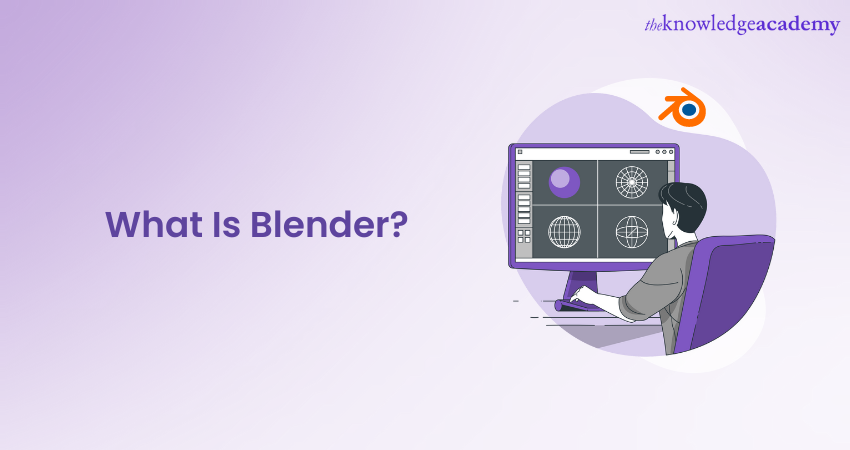
In digital creation and animation, Blender stands as a powerful and versatile tool, empowering artists, designers, and creators to bring their imaginations to life. From its inception, Blender has evolved into a leading open-source 3D content creation suite. However, a lot of users still wrangle with the question What is Blender?
Blender Architecture plays a key role in its success, providing a flexible framework for users to manipulate and create 3D models and animations efficiently. According to a report by Skyquest, the global market size for Blender was GBP 2.1 billion in 2022 and is expected to grow to around GBP 3.15 billion by 2030. In this comprehensive guide, we'll dive deep into the What is Blender, exploring its features, capabilities, and significance in various industries.
Table of Contents
1) Understanding Blender in detail: It’s history and definition
2) Diving into Blender's Capabilities: Exploring the Software
3) Blender's Significance Across Industries
4) Limitations of Blender: Exploring its boundaries
5) Blender's Community and Support
6) Conclusion
Understanding Blender in detail: It’s history and definition
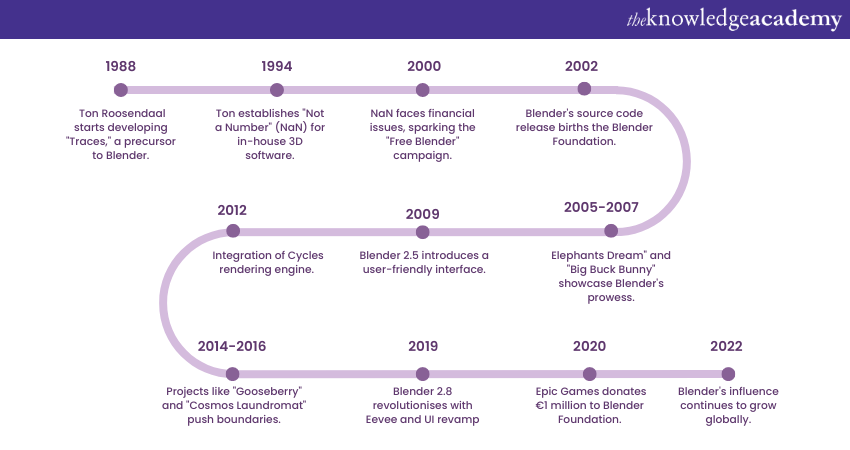
In the rapidly evolving landscape of digital artistry, one name shines brightly: Blender. Often heard in conversations among artists, designers, and creators, Blender is not just a software; it's a powerful suite of tools that empowers individuals to craft immersive 3D content. To truly appreciate the significance of Blender, let's dive into its meaning and definition.
At its core, Blender refers to an open-source 3D content creation suite that encompasses an array of functionalities, including 3D modelling, animation, rendering, texturing, and more. The term itself holds a deeper connotation, reflecting the fusion of creativity, technology, and innovation. Just as a physical blender seamlessly combines diverse ingredients into a harmonious mixture, Blender blends artistic expression and technical prowess to create visually captivating digital worlds.
The term "blender" is symbolic of the software's purpose - it blends different aspects of design, animation, and rendering into a unified platform. Blender represents a digital canvas where ideas are transformed into tangible creations, where imagination takes shape, and where possibilities are limited only by the boundaries of one's creativity.
But Blender is more than just a tool; it's a collaborative endeavour that thrives on the principles of open-source development. This means that Blender's source code is accessible to everyone, promoting a community of developers, artists, and enthusiasts who contribute to its growth and evolution. This collaborative nature embodies the spirit of democratisation, enabling individuals from various backgrounds to engage with cutting-edge technology without financial barriers.
While Blender's primary function is evident in its name, its reach extends far beyond its immediate definition. It represents a creative haven where artists sculpt lifelike characters, animators breathe life into narratives, architects visualise architectural marvels, and educators inspire the next generation of digital visionaries.
The journey of Blender from its inception to its present stature is a testament to its transformative power. Originally developed by Ton Roosendaal and later released to the public in 2002, Blender underwent a profound shift as it transitioned from a commercial venture to an open-source project. This decision marked the birth of the Blender Foundation, igniting a global movement that has shaped the software into what it is today.
The versatility of Blender is a hallmark of its significance. As a 3D content creation suite, it caters to a diverse range of industries. In the realm of entertainment, Blender finds its place in animated films, visual effects, and game development. Architects and designers rely on Blender for visualising architectural projects and prototypes. The education sector benefits from Blender's accessibility, using it to introduce students to the world of 3D artistry and digital creation.
Blender's meaning and definition extend beyond its status as software. It encapsulates the harmonious blend of artistic vision and technological innovation. Blender empowers individuals to create, explore, and experiment in the digital domain. More than just a collection of tools, Blender embodies a community-driven approach to creativity, encouraging collaboration and removing barriers to entry. As we continue to witness the evolution of digital artistry, Blender remains a beacon of inspiration, beckoning creators to blend their ideas, talents, and aspirations into a symphony of visual brilliance.
Diving into Blender's capabilities: Exploring the software
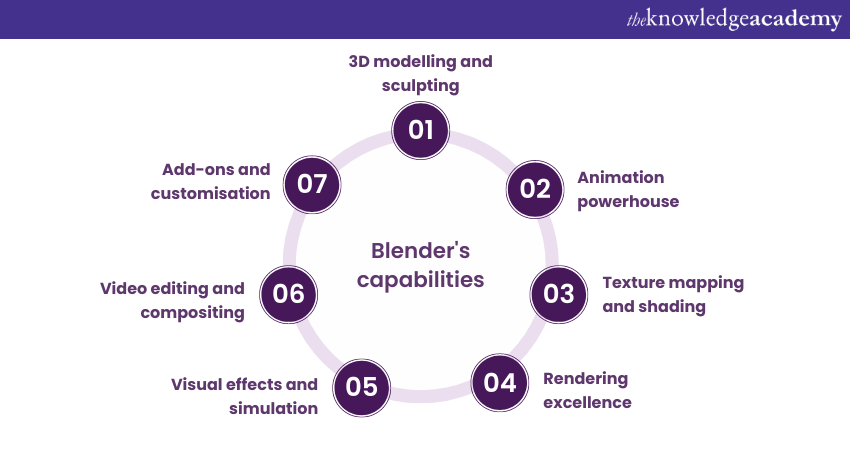
Blender, the open-source 3D content creation suite, is a digital playground brimming with an impressive array of capabilities that cater to the diverse needs of artists, designers, and creators. Its multifaceted toolkit empowers users to unleash their creativity and craft intricate 3D models, animations, textures, and much more. In workflows that combine Unreal Engine and Blender, Blender plays a crucial role in asset creation before those assets are imported into a game engine. Let's take a deep dive into the captivating world of Blender's capabilities, unveiling the tools that make it a staple in the realm of digital artistry.
a) 3D modelling and sculpting: At the heart of Blender's creative arsenal lies its robust 3D modelling and sculpting tools. With the ability to start from a blank canvas or manipulate existing objects, users can sculpt, shape, and mould intricate designs with precision. The sculpting features emulate the tactile experience of working with clay, allowing artists to add fine details and organic textures to their creations. Whether crafting characters, objects, or environments, Blender's modelling capabilities set the stage for boundless creativity.
b) Animation powerhouse: Animating in Blender is akin to breathing life into characters and objects. The animation system offers a comprehensive suite of tools for creating seamless motion. Keyframe animation provides control over individual movements, while rigging empowers users to create intricate skeletal structures for characters. Additionally, Blender's timeline, graph editor, and dope sheet offer a robust platform to fine-tune animations, resulting in captivating and dynamic sequences.
c) Texture mapping and shading: The art of digital storytelling demands attention to detail, and Blender delivers on this front through its texturing and shading capabilities. Artists can apply intricate textures and materials to their models, lending them a realistic touch. Blender's node-based shader editor allows users to create complex material networks, giving birth to captivating visual effects. From realistic skin tones to mesmerising sci-fi surfaces, Blender's texturing and shading tools have no bounds.
d) Rendering excellence: While creating stunning 3D models is impressive, rendering them into lifelike images is the cherry on top. Blender offers two powerful rendering engines: Cycles and Eevee. Cycles excels in producing high-quality, photorealistic renders with accurate lighting and global illumination. On the other hand, Eevee provides real-time rendering for quick previews, enabling artists to iterate and experiment without delay. These engines empower users to showcase their creations in the best possible light.
e) Visual effects and simulation: Blender's allure extends beyond static models and animations. It embraces the domain of visual effects and simulation, allowing users to simulate realistic phenomena. Fluid simulations bring liquids to life, while smoke and fire simulations create dramatic scenes. Physics-based simulations lend authenticity to cloth, hair, and particles, making environments and characters feel alive and reactive.
f) Video editing and compositing: In a world where multimedia content rules, Blender steps up with its video editing and compositing tools. Artists can assemble video sequences, add effects, and fine-tune clips within Blender's intuitive video editor. Compositing nodes empower users to merge different elements seamlessly, transforming ordinary footage into extraordinary visual compositions.
g) Add-ons and customisation: Blender's open-source nature encourages community contributions in the form of add-ons. These extensions enhance Blender's functionality, ranging from specific tools to entire workflows. Moreover, Blender allows users to customize its interface and shortcuts, tailoring the software to their preferences and workflow with the help of Blender Shortcut Keys.
Blender's capabilities are a testament to its commitment to providing a comprehensive creative toolkit. It's not just about designing and animating; it's about crafting immersive experiences that captivate audiences. From breathing life into characters with animations to creating lifelike textures and environments, blender video editing allows you to add a professional touch to your projects. Blender is a canvas where imagination knows no bounds.
Unleash Your Imagination: Elevate Your Skills with Blender Creator Training!
Blender's significance across industries
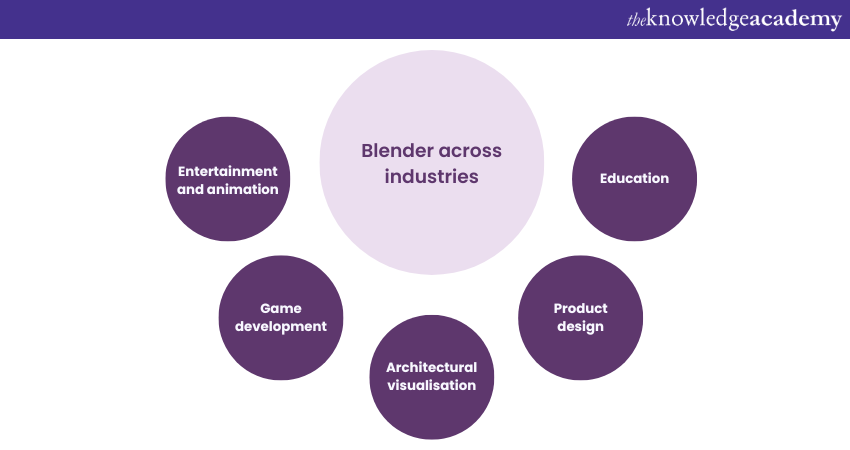
Blender's versatility and robust feature set have positioned it as a significant player across a wide spectrum of industries, catering to various creative and practical needs. Its impact extends far beyond its identity as mere software; it's a powerful tool that empowers professionals and enthusiasts alike. Here's a glimpse into how Blender's significance resonates across industries:
a) Entertainment and animation: Blender has found its place in the world of entertainment and animation. From independent filmmakers to animation studios, Blender's animation tools offer the ability to craft compelling narratives and stunning visual effects. Its flexibility and range of features make it an ideal choice for creating animated films, TV shows, and even short videos for online platforms.
b) Game development: The game development industry benefits from Blender's capabilities in 3D modelling and asset creation. Its compatibility with various game engines enables developers to seamlessly integrate Blender-generated content into their games. The ability to create intricate characters, environments, and objects enhances the overall gaming experience.
c) Architectural visualisation: Architects and designers rely on Blender for architectural visualisation. It's realistic rendering capabilities allow them to showcase designs to clients with high fidelity. From interior spaces to intricate building exteriors, Blender helps architects bring their visions to life and make informed design decisions.
d) Product design: Blender plays a crucial role in product design, allowing designers to create 3D models and prototypes before manufacturing. Its ability to visualise products in a digital environment assists in refining designs, reducing development time, and ensuring a better end product.
e) Education: Blender's open-source nature and expansive feature set make it an excellent educational tool. Schools, colleges, and training institutions use Blender to introduce students to the world of 3D modelling, animation, and digital art. This empowers the next generation of creatives with valuable blender skills that align with industry demands.
Elevate Your Unity Projects with Expert 3D Modelling: Register in our Blender Training Today!
Limitations of Blender
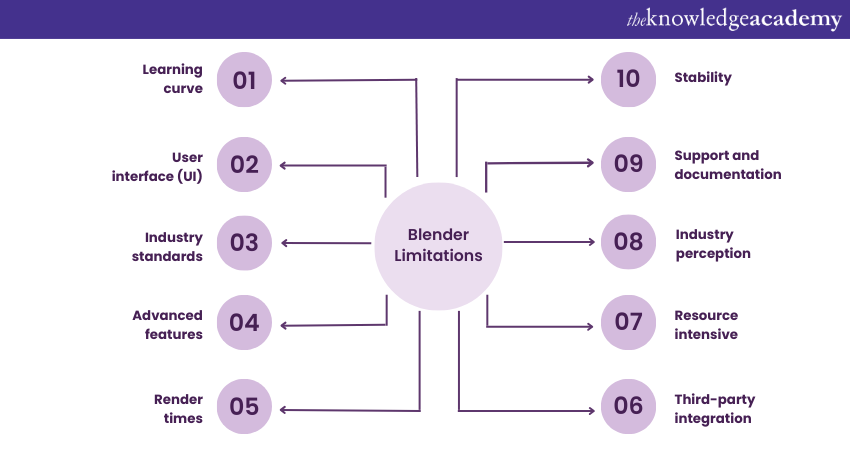
While Blender is a robust and versatile tool, it's essential to understand its limitations to make informed decisions about its use.
a) Learning curve: Blender's extensive feature set can be overwhelming for newcomers. The learning curve can be steep, requiring more time and effort to master its intricacies.
b) User interface(UI): While improved over the years, some users find Blender's user interface less intuitive compared to other software. Navigating through menus and panels might feel complex, especially for beginners.
c) Industry standards: In professional pipelines, some industries heavily rely on software with established industry standards. Blender's adoption might be limited due to entrenched alternatives.
d) Advanced features: While Blender offers a wide array of features, certain advanced capabilities, like specialised simulation tools found in dedicated software, might not be as comprehensive.
e) Render times: Despite its capable rendering engines, rendering complex scenes in Blender can be time-consuming, particularly when aiming for high-quality output.
f) Third-party integration: While improving, integrating Blender into existing workflows with other software might require additional steps due to compatibility issues.
g) Resource intensive: Running Blender on resource-limited systems could lead to sluggish performance or longer render times, affecting productivity.
h) Industry perception: Despite its capabilities, Blender historically faced a perception of being less professional than its paid counterparts. However, this perception is changing as Blender gains recognition.
i) Support and documentation: While Blender's community is active and supportive, finding specific solutions for unique challenges might be more challenging compared to well-documented paid software.
j) Stability: While Blender releases regular updates, some users have reported occasional stability issues or crashes, impacting their workflow efficiency.
Overcoming these limitations requires a combination of dedicated learning, community engagement, and potentially integrating Blender with other software to leverage its strengths effectively. In the context of a Blender Benchmark, this approach allows users to optimise their workflow and fully utilise Blender’s capabilities.
Unlock Your Creativity with Our Comprehensive 2D Animation Training!
Blender's community and support
At the heart of Blender's remarkable journey lies its vibrant and dedicated community, a global network of artists, developers, educators, and enthusiasts who share a passion for 3D content creation. This community-driven ecosystem is a cornerstone of Blender's success, providing essential support, collaboration, and inspiration to users of all levels.
a) Collaborative learning: Blender's community promotes a spirit of collaborative learning, where beginners and experts come together to share insights, tips, and tutorials. Online forums, social media groups, and dedicated websites offer platforms for users to seek help, ask questions, and learn from each other's experiences.
b) Extensive documentation: The Blender community is known for its extensive and user-friendly documentation. This wealth of resources includes official manuals, video tutorials, and community-contributed guides, making it easier for users to navigate Blender's features and functionalities.
c) User-driven development: Blender's open-source nature enables users to contribute directly to its development. Through reporting bugs, suggesting features, or even submitting code, the community actively participates in shaping Blender's evolution, ensuring that it addresses user needs effectively.
d) Artist showcases: Blender's community celebrates artistic achievements through showcases and contests. This not only highlights the incredible work users create but also inspires others to push their creative boundaries.
e) Blender conference: An annual event, the Blender conference serves as a hub for Blender enthusiasts to gather, exchange ideas, and learn from industry experts. This in-person and virtual event provides a platform for showcasing projects, discussing techniques, and forging connections.
f) Blender Cloud: Blender Cloud offers premium content, training, and asset libraries, providing an avenue for users to support the Blender foundation while accessing exclusive resources.
g) Third-party plugins: The community-driven nature of Blender has led to the development of numerous third-party plugins and add-ons, enhancing Blender's capabilities and addressing specific user needs.
h) Accessibility: The community's commitment to making Blender accessible ensures that users from various backgrounds, skill levels, and financial situations can engage with the software and its resources.
In essence, Blender's community is not just a support network; it's a thriving ecosystem that amplifies creativity, fosters innovation, and encourages collaboration. As Blender continues to evolve, its community remains a driving force, ensuring that artists, designers, and creators have the tools and resources they need to bring their visions to life
Conclusion
Hopefully through this blog, we have answered your questions on What is Blender and the use cases and applications of Blender software. Blender is not just software; it's an embodiment of creativity, innovation, and community collaboration. From its humble beginnings to its prominent status today, Blender's journey is a testament to the power of open-source development and the boundless potential of creative minds.
Unlock Your Creative Potential with our cutting-edge Animation and Design Training
Upcoming Office Applications Resources Batches & Dates
Date
 Articulate Storyline Training
Articulate Storyline Training
Fri 9th May 2025
Fri 11th Jul 2025
Fri 12th Sep 2025
Fri 14th Nov 2025






 Top Rated Course
Top Rated Course



 If you wish to make any changes to your course, please
If you wish to make any changes to your course, please


